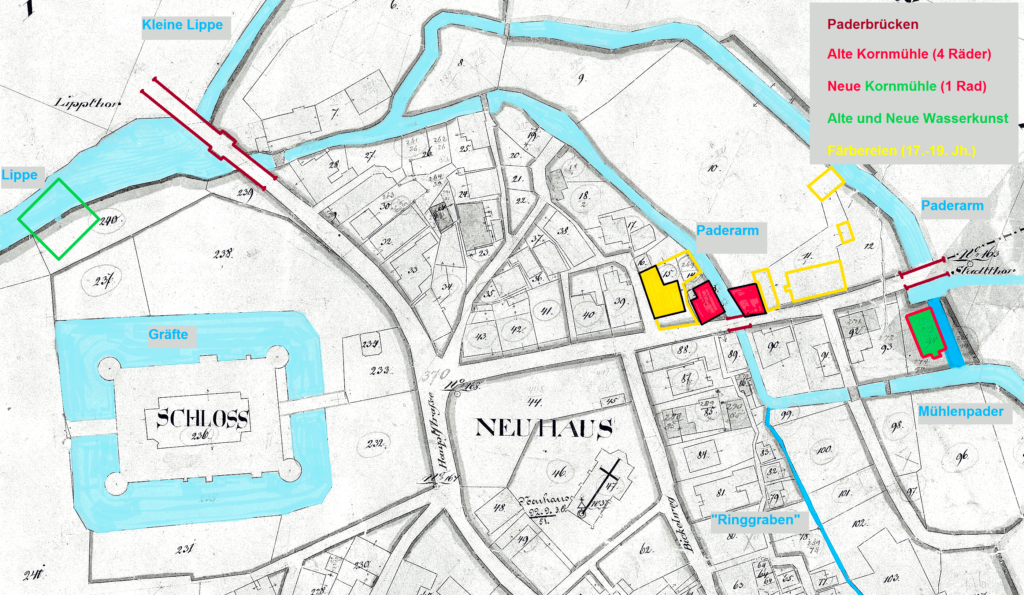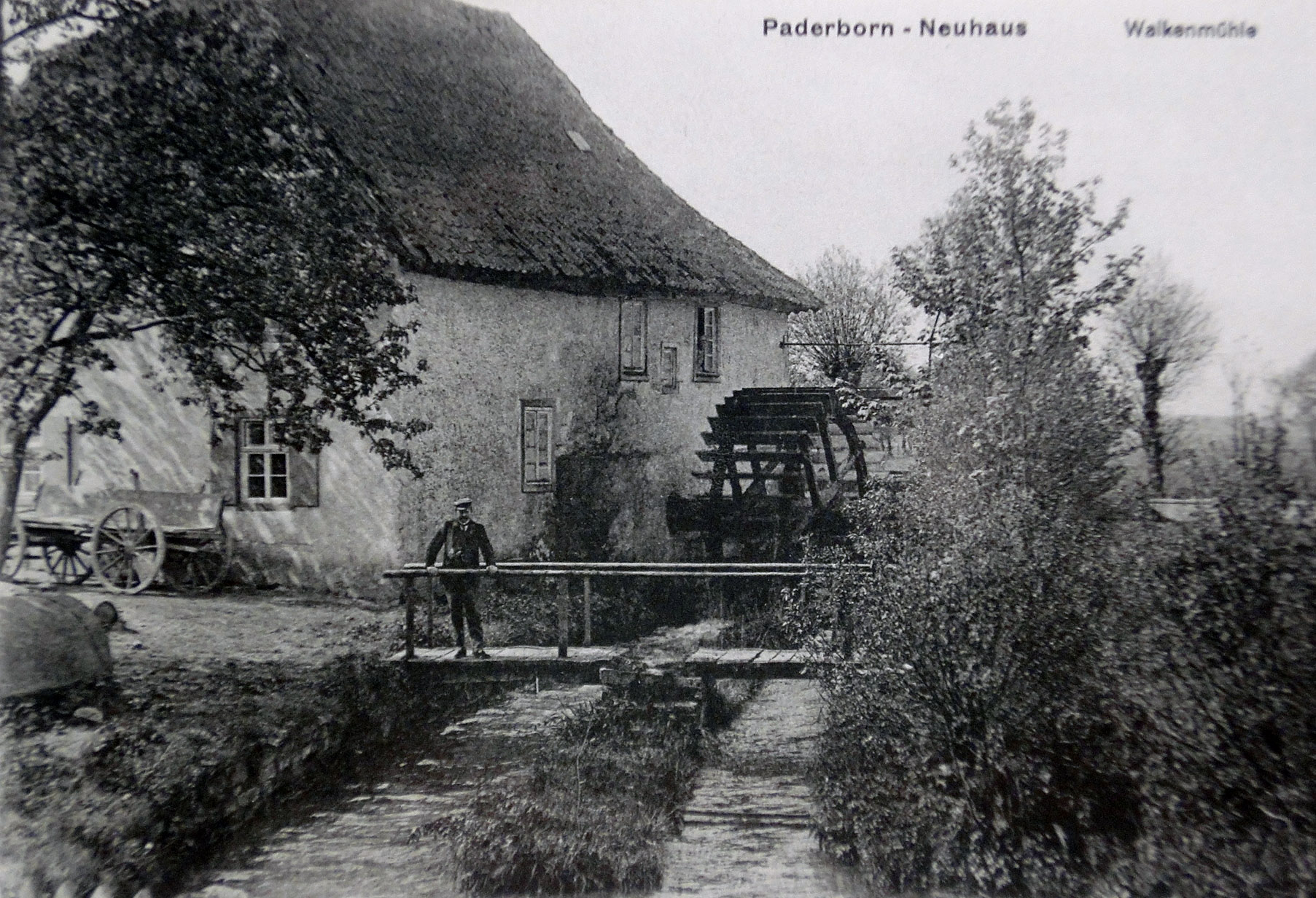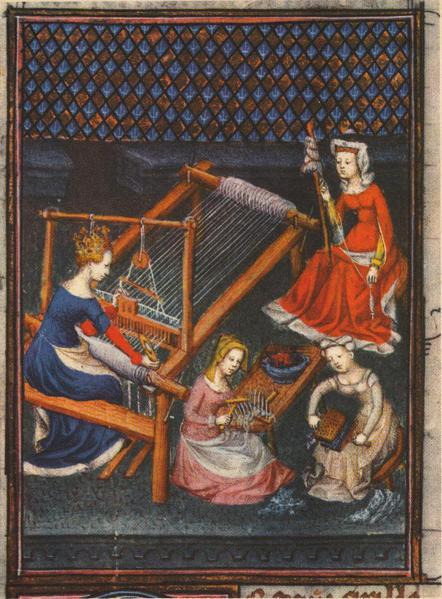[1] LA Münster, Fürstbistum Pb, Hofkammer Nr. 354, fol. 2r-2v. A draft contract between master Zülcher and bishop Ferdinand of 8 Feruary 1663 shows: The sovereign undertakes „that the dye works shall stay with him and his heirs“ (Art. 1); a guarantee which was also to be ratified by the Paderborn cathedral chapter.
[2] LA Münster, Fürstbistum Pb, Ämterrechnungen Neuhaus (1672/73), Nr. 1081, fol. 102r.
[3] The „Neuhäuser Ortschronik“ (1797) states that, according to information from the Rentschreiber Waldeyer, in the 17th century the „most distinguished dye works […] stood on the banks of the Pader between the two bridges that lay before the gate to Paderborn“. Cf. EAB Pb, AV Acta 88, fol. 55-100, Zitat fol. 59r.
[4] LA Münster, Fürstbistum Pb, Hofkammer Nr. 354, fol. 2r. Art. 2, Vertragsentwurf 8 February 1663.
[5] Cf. official article of the dyers, undated (presumably 1660s), LA Münster, Fürstbistum Pb, Hofkammer Nr. 354, fol. 9r-10r. The dyes widely used in Westphalia included woad for the colours blue and black. Cf. Detten, Wirtschaftsleben, p. 123.
[6] In the accounting year 1672/73, „Dolle der Farber“ paid 15 Rtl, 8 ß and 9 d to the „Renteikasse“ for the dyeing of 185 sheets. In addition, there was the lease fee for „the place near the dye works“, for which another 5 Rtl. was paid. LA Münster, Fürstbistum Pb, Ämterrechnungen Neuhaus (1672/73), Nr. 1081, fol. 102r.
[7] Cf. Neuhäuser Ortschronik (1797), statement by the Rentschreiber Waldeyer: „The main master of the same [dyeing works] called himself Martin Dolle. […] It is considered that the Pader water contributes a lot to dyeing beautiful black.“. EAB Pb, AV Acta 88, fol. 55-100, Zitat fol. 59r; 60r.
[8] Cf. „Wandmacher Amtsprivilegia“ (1666), LA Münster, Fürstbistum Pb, Hofkammer Nr. 354, fol. 110r-113v.
[9] Cf. „Privilegienbestätigung“ by prince-bishop Franz Egon von Fürstenberg, 13 November 1790. LA Münster, Fürstbistum Pb, Hofkammer Nr. 391, fol. 1r-4r.
[10] Art. 14, „Wandmacher Amts privilegia“ (1666), LA Münster, Fürstbistum Paderborn, Hofkammer Nr. 354, fol. 111r.















